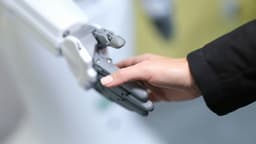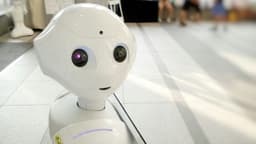The Future of Nursing Robots in Elderly Care
The future of nursing robots is one of the most exciting possibilities in healthcare. As global populations age rapidly, countries worldwide face rising demands for elder care, and nursing robots may offer a solution to alleviate workforce shortages and provide support for elderly individuals. These robots, particularly humanoid models, are being developed to assist with everything from daily tasks and mobility support to health monitoring and even companionship.
Growing Need for Nursing Robots
The need for innovative solutions in elder care is clear. According to the World Health Organization, the global population aged 60 and older will double by 2050, reaching approximately 2.1 billion. Countries like Japan, where 29% of the population is already over the age of 65, are already facing severe shortages in the healthcare workforce, with similar patterns expected globally. This trend drives interest in robotic caregivers as a possible answer to both support elderly individuals and alleviate the pressure on healthcare providers.
Technological Foundations of Nursing Robots
Nursing robots rely on several core technologies, and advancements in each area are propelling the field forward:
-
AI and Machine Learning: AI is the backbone of nursing robots' adaptability, helping robots "learn" from each patient interaction to provide increasingly personalized care. For example, AI algorithms can analyze behavioral data to identify patterns that may signal health concerns, enabling earlier intervention. The global AI in healthcare market is projected to grow significantly, with estimates reaching \$45.2 billion by 2026, indicating rapid advances that could benefit nursing robotics.
-
Sensors and Health Monitoring: Nursing robots are equipped with sensors to monitor vital signs like heart rate, temperature, and movement patterns. The global medical sensors market is expected to surpass \$19 billion by 2025, driven largely by the demand for health monitoring in elder care. These sensors allow robots to track patients' health in real-time and alert healthcare professionals in emergencies.
-
Human-Computer Interaction (HCI): For robots to succeed in elder care, they need to communicate naturally with patients. Developments in speech recognition and emotion recognition technology allow robots to detect human emotions, making their interactions more empathetic and comforting. This capability is particularly valuable for elderly individuals who may feel isolated or lonely.
-
Robotics Engineering and Mobility: Mobility is essential for nursing robots, as they often need to navigate homes or healthcare facilities. In recent years, advanced mobility technologies have enabled robots to move more freely and assist patients in physical tasks, making them more functional for in-home care.
The Role of Humanoid Robots in Elder Care
Humanoid robots, designed to look and act more like humans, are emerging as a promising tool in elder care. Studies show that people generally feel more comfortable with robots that resemble humans, which can make interactions more meaningful and improve the quality of care. In Japan, for example, robots like "Pepper" are already being used in nursing homes to provide companionship, reducing feelings of loneliness and boosting morale among elderly residents. Over 60% of elderly patients report feeling less lonely after interacting with humanoid robots, highlighting their potential to positively impact mental health.
In addition to companionship, humanoid robots are being developed to assist with essential daily activities. These robots can remind patients to take medications, help with exercises, and support mobility—all crucial aspects for elderly individuals aiming to maintain independence. Estimates suggest that humanoid robots could eventually manage up to 30% of non-critical tasks currently performed by healthcare staff, allowing human caregivers to focus on more complex, sensitive aspects of care.
Cost is a factor that may affect widespread adoption. While the medical robotics market is projected to reach \$16.74 billion by 2025, making these tools more accessible, the upfront costs of robotic caregivers can be prohibitive, particularly in lower-income areas. Additionally, while many believe robots will supplement rather than replace human caregivers, there are concerns about potential job displacement in healthcare.
Future Prospects and Limitations
Although the potential of nursing robots is promising, they are not a complete replacement for human care. Currently, many nursing robots are in pilot stages and require further advancements to reach full effectiveness in elder care settings. Additionally, while costs are decreasing, they remain a significant barrier to adoption for many healthcare providers.
Looking ahead, humanoid nursing robots could evolve to provide both practical and emotional support, potentially changing the way we care for elderly individuals. If they become a mainstream part of healthcare, these robots could improve life quality for elderly individuals and help manage the growing demands on healthcare systems.












